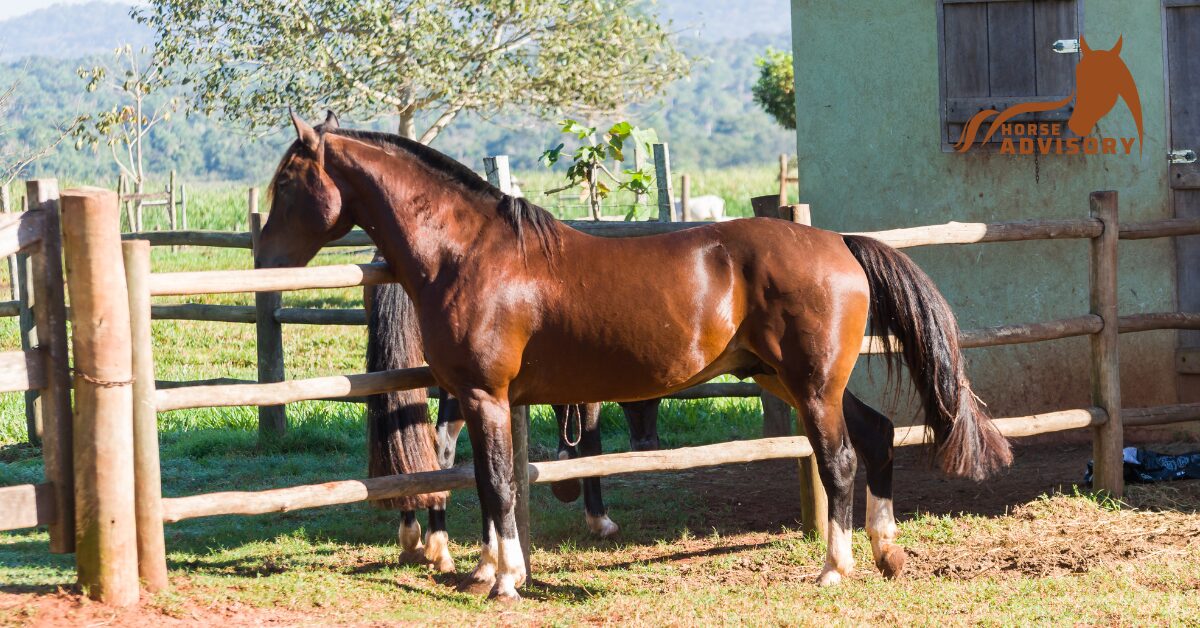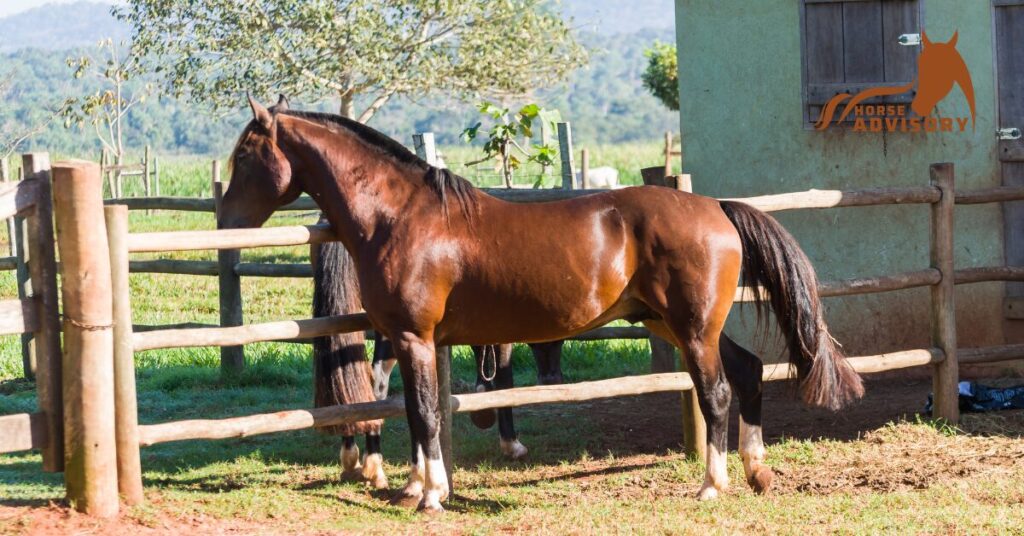The Thoroughbred breed epitomizes speed, agility, and grace, earning acclaim for its stellar performance on racetracks and captivating enthusiasts globally. This in-depth exploration of Thoroughbreds delves into their rich history, unique traits, and the meticulous care and training essential for nurturing these majestic beings. Whether you’re an experienced equestrian or simply admire these graceful creatures, grasping the essence of the Thoroughbred is fundamental to appreciating its enduring legacy in the realm of horsemanship.
History and Origins of Thoroughbred breed
The Thoroughbred breed originated in England during the 17th and 18th centuries. Its lineage can be traced back to three Arab stallions imported into England – the Byerley Turk, the Darley Arabian, and the Godolphin Arabian. These stallions were bred with local mares, producing foals with the strength, endurance, and speed that would become the hallmarks of the Thoroughbred breed.
Exploring the Exceptional Thoroughbred Horse
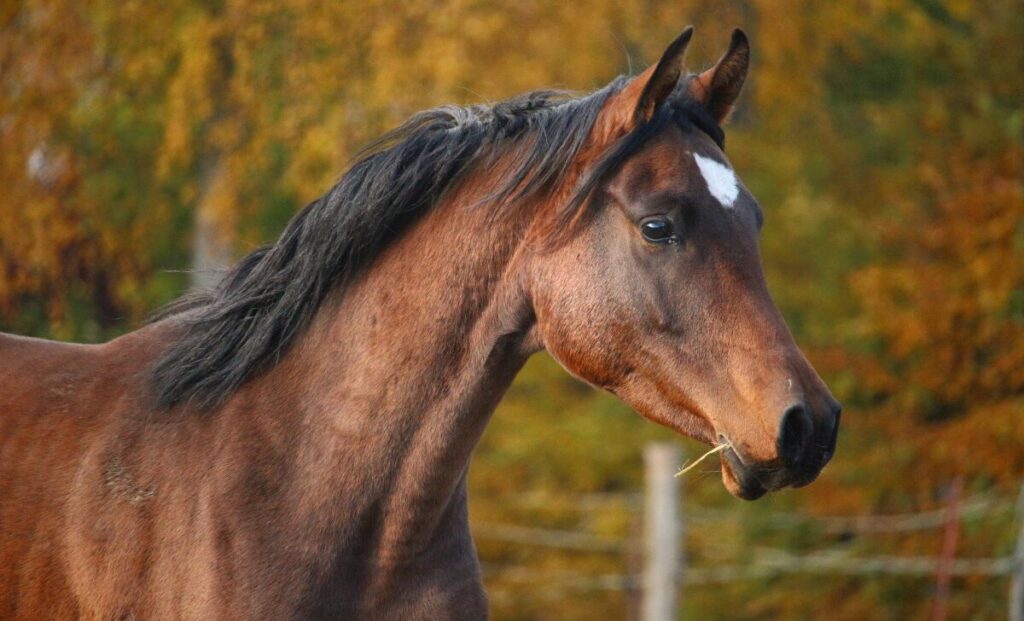
The Thoroughbred horse, a breed celebrated for its speed, agility, and spirited demeanor, continues to captivate equine enthusiasts worldwide. Let’s delve deeper into the legacy, characteristics, and versatility of this exceptional breed.
Origins and Evolution of the Thoroughbred Breed
Thoroughbreds have their roots in 17th and 18th century England, where Arab and Turkish horses were selectively bred to create an agile and swift breed. This lineage has resulted in a horse breed known for its distinctive genetic characteristics and exceptional capabilities.
Characteristics of an Exceptional Athlete
Thoroughbreds are meticulously crafted for their intended purpose, evident in their anatomy:
- Their height is carefully balanced to ensure adaptability on the racecourse.
- Their slender yet robust frames are finely tuned for maximum speed.
- Their alert and expressive heads mirror their heightened awareness.
- With powerful hindquarters, they possess remarkable propulsion.
- Their radiant coats, displaying a range of hues, enhance their majestic appearance even further.
Assessing Notable Traits in Thoroughbreds
Beyond their physical prowess, Thoroughbreds are recognized for their spirited and energetic nature. They are highly responsive and intelligent, traits that make them excellent competitors in various equestrian disciplines. Despite their high-energy disposition, a well-trained Thoroughbred can be kind, brave, and an excellent horse for beginners.
Heritage and Purposeful Breeding
The Thoroughbred breed is a testament to centuries of careful and intentional breeding. Originally, Arab and Turkish horses were selectively bred with English mares to create offspring that combined strength, endurance, and speed – all crucial qualities for racing. This process wasn’t random or left to chance; it was a calculated endeavor aimed at producing the ultimate racing horse.
An important aspect of this process involves studying a horse’s lineage. By looking at a horse’s ancestors and their racing history, breeders can make informed predictions about a young horse’s potential for success on the racetrack. This historical knowledge allows for continuous improvement and refinement of the breed.
Refinements for Optimal Athleticism
The Thoroughbred breed has undergone significant refinement over the centuries, thanks to evolving breeding strategies. The primary aim has always been to enhance their inherent athletic abilities – speed, endurance, and agility. But these qualities don’t just make a great racehorse. They’re also crucial for other equestrian disciplines.
Show jumping requires a combination of speed for the run-up and agility for the leap itself. Polo demands agility for quick turns and speed for rapid plays. By focusing on these key athletic traits, breeders have ensured that Thoroughbreds not only excel in racing but also shine in a variety of other equestrian disciplines.
Disposition and Flexibility in Abilities
While Thoroughbreds are famed for their physical capabilities, their temperament and versatility in abilities deserve equal recognition. Beyond the racetrack, Thoroughbreds have proven their mettle in show jumping, dressage, and eventing. Their bravery makes them willing to tackle high jumps and difficult courses.
Their willingness to work and responsive nature mean they can learn complicated dressage moves or adapt to the varied demands of eventing. It’s this combination of physical prowess and adaptable temperament that make Thoroughbreds such a versatile breed, capable of excelling in any discipline they are trained in.
Exploring the Thrills of Thoroughbred Racing
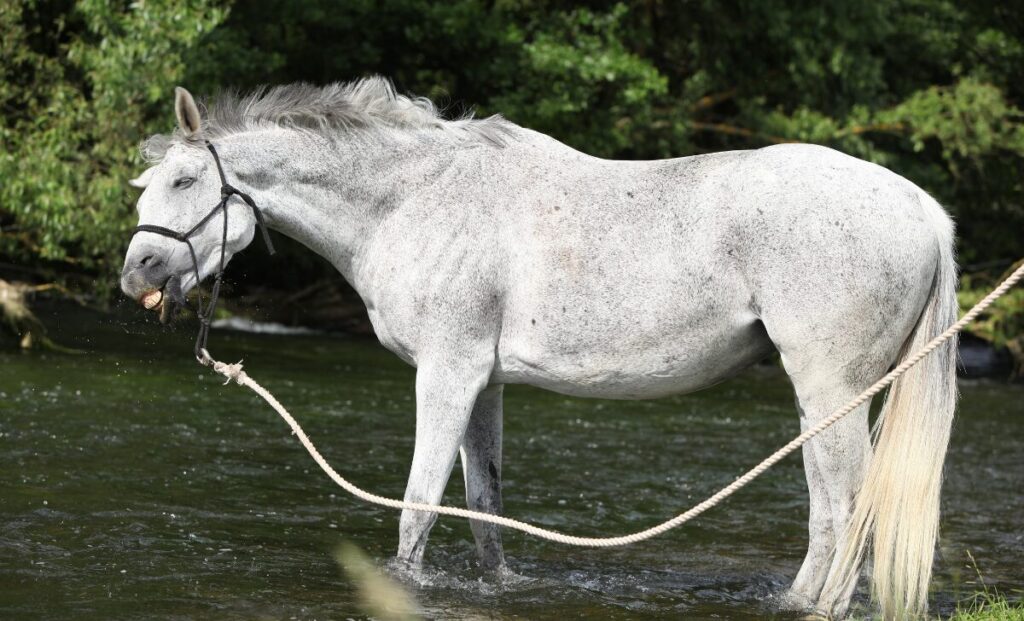
Thoroughbred racing is a spectacle that captivates audiences worldwide. The high-stakes competition, the thunderous galloping of hooves, and the sheer athleticism of the horses combine to create an experience that’s both exhilarating and unforgettable. Let’s take a closer look at this thrilling sport.
Thoroughbreds are the stars of the show in horse racing. Bred for their speed, agility, and endurance, these horses are the epitome of equine athleticism. Every stride showcases their power and grace, making them the ideal breed for the intensity of the racetrack.
Evolution of Thoroughbred Racing
Thoroughbred racing has evolved significantly from its early beginnings in aristocratic horse matches. Over time, prestigious races such as the English Classic Races and the American Triple Crown were established, enhancing the reputation of the breed in competitive sports. These events have grown into grand global spectacles, drawing crowds from all corners of the world and contributing to the worldwide acclaim of the Thoroughbred breed.
The Training Regimen
Training a Thoroughbred for racing is an intricate process that requires expert knowledge and dedication. It involves rigorous physical conditioning to build strength and stamina, coupled with careful dietary management to ensure optimal health and performance. Training also includes teaching the horse to respond to jockey commands and to navigate the track effectively.
The Role of the Jockey
In Thoroughbred racing, the jockey plays a critical role. Their skills in guiding the horse, managing pace, and making tactical decisions during races can often be the difference between victory and defeat. A strong bond between jockey and horse is essential for success on the racetrack.
Icons of the Track: Famous Thoroughbreds
Throughout the history of Thoroughbred racing, some names have become synonymous with excellence. Horses like Secretariat, who stunned the world with his 31-length victory in the 1973 Belmont Stakes, and Man o’ War, who set numerous records during his illustrious career, are true icons of the sport. Their remarkable achievements on the track not only captivated audiences but also shaped the history of Thoroughbred racing. These legendary horses left a lasting legacy that continues to inspire and motivate generations of equestrian enthusiasts.
Versatility Beyond the Racetrack
Thoroughbreds are not just limited to the racetrack. Their athletic prowess extends to endurance riding, where they showcase their remarkable stamina over long distances. They also excel in eventing, a rigorous equestrian discipline that combines dressage, cross-country, and show jumping.
The speed and agility inherent in Thoroughbreds make them formidable competitors in this challenging sport. Furthermore, their quick maneuvers and rapid sprints make them valuable players in the fast-paced world of polo. These diverse capabilities highlight the flexibility and athletic excellence of the breed in a variety of equestrian disciplines.
Regional Racing Traditions
Thoroughbred racing varies greatly from region to region, reflecting diverse rules, race lengths, and track surfaces. For instance, European contests often favor turf tracks, while North American races typically take place on dirt tracks.
The expansion of the sport into Asia and the Middle East has further broadened its reach, showcasing the adaptability of Thoroughbreds to different racing conditions and contributing to the global allure of the sport.
Innovations in Thoroughbred Racing
Technological advancements and innovative training approaches have brought about significant transformations in Thoroughbred racing. The introduction of synthetic track surfaces represents a major shift aimed at improving safety for both horses and jockeys.
Cutting-edge training regimens, incorporating elements like underwater treadmills and high-speed treadmills, are designed to maximize the athletic potential of Thoroughbreds. These developments are setting new standards in the sport and pushing Thoroughbred racing into the future.
Optimizing Thoroughbred Wellness and Performance
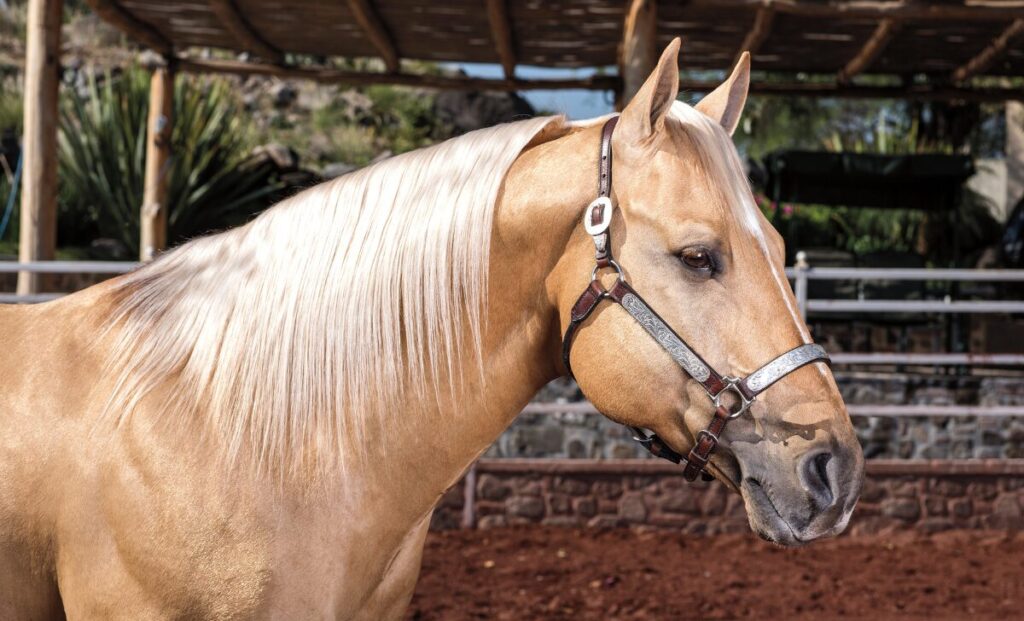
Optimizing the wellness and performance of Thoroughbreds involves a comprehensive approach that considers their diet, health, training, and lifestyle. Several studies highlight the importance of maintaining maximal speed as a key success factor in horse racing. To achieve this, the horse’s overall health and fitness must be prioritized. Proactive strategies are crucial in preventing injuries that could compromise performance outcomes.
Nutrition Tailored to Thoroughbred Needs
The dietary needs of Thoroughbreds are unique due to their high-energy lifestyle. A balanced diet is essential for their optimal health and performance. Horses primarily consume grass and hay, but additional vitamins or supplements may be recommended by a vet to improve their health and performance. Dr. Juliet Getty emphasizes how nutrients work in the athlete’s body and how a horse’s diet can influence its performance.
Proactive Health Strategies for Thoroughbreds
Proactive health strategies for Thoroughbreds involve regular veterinary check-ups, proper vaccinations, and deworming protocols. These measures help monitor the horse’s health status and identify potential issues early. Moreover, optimizing workloads is important to prevent injuries that could impact the horse’s performance.
The Importance of Grooming and Hygiene in Thoroughbred Care
Grooming and hygiene are integral parts of Thoroughbred care. Regular grooming not only keeps the horse looking its best but also promotes skin health and provides an opportunity to check for injuries or abnormalities. Hygiene practices, such as cleaning stables and equipment, are crucial in preventing the spread of diseases.
Ensuring a Balanced Lifestyle for Thoroughbreds
Ensuring a balanced lifestyle for Thoroughbreds involves providing them with sufficient rest and relaxation time alongside their rigorous training schedules. This balance helps prevent overtraining and stress, contributing to their overall well-being and performance. Performance horse managers are constantly on the lookout for signs of inflammation, especially in the joints, as this could indicate overwork or injury.
Introduction to Thoroughbred Training Techniques
Training Thoroughbreds is a refined art that requires a deep understanding of equine behavior, physiology, and psychology. It involves a range of techniques designed to optimize the horse’s physical ability and mental readiness for racing.
Conditioning the Thoroughbred
Conditioning is a key aspect of Thoroughbred training. This process gradually builds up the horse’s strength and stamina through regular exercise and workouts. Conditioning programs often involve a combination of long, slow distance (LSD) training and high-intensity interval training (HIIT). LSD builds endurance by encouraging the horse’s body to utilize oxygen more efficiently, while HIIT improves speed and power.
Mental Training and Preparation
Mental preparation is just as important as physical conditioning in Thoroughbred training. Horses need to be comfortable with the sights, sounds, and experiences of a racecourse. Techniques such as desensitization and habituation can help horses become accustomed to potentially stressful stimuli, making them calmer and more focused on race day.
Skill Development and Technique Training
Training a Thoroughbred requires a focus on specific racing skills and techniques. One of the primary skills is breaking quickly from the starting gate. This is crucial as a good start can significantly influence the horse’s position during the race. Trainers often use simulations of race conditions to help the horse get accustomed to the noise and activity at the starting gate, thereby improving their reaction time.
Maintaining a steady pace during the race is another essential skill. It requires the horse to balance speed and endurance, ensuring that it doesn’t exhaust its energy reserves too early. Trainers often use pace work, where the horse is trained to run at different speeds for set distances, to develop this ability.
The final important skill is the ability to save enough energy for a sprint to the finish line. This is often achieved by training the horse to respond to cues from the jockey, signaling when to unleash their final burst of speed.
Injury Prevention and Recovery
Injury prevention is an integral part of Thoroughbred training. Regular health checks by a veterinary professional can help detect any early signs of potential injuries. These checks may include monitoring the horse’s heart rate and respiratory rate, checking for any signs of lameness, and assessing the horse’s overall condition.
The importance of proper warm-up and cool-down routines cannot be overstated in preventing injuries. Warm-ups gradually increase the horse’s heart rate and circulation, preparing the muscles for the intense exercise to follow. Cool-downs, on the other hand, allow the horse’s heart rate and breathing to return to normal and help remove waste products from the muscles.
Additionally, trainers must ensure timely rest periods for the horses to recover and rebuild their strength. Overtraining can lead to fatigue and increase the risk of injury.
Nutritional Support for Training
Proper nutrition plays a crucial role in supporting the rigorous demands of Thoroughbred training. A balanced diet provides the necessary energy for workouts and aids in recovery post-exercise. The horse’s diet should be rich in quality protein for muscle development and repair, carbohydrates for energy, and fats for additional calories.
The dietary requirements of a Thoroughbred can vary depending on several factors. These include the horse’s age, size, and training intensity. Younger horses or those in intense training may require more calories and protein, while older or less active horses may require fewer.
It’s also important to provide ample fresh water and free-choice hay or pasture to aid digestion and provide necessary fiber. A consultation with a veterinarian or equine nutritionist can provide valuable guidance on creating a diet that meets a specific horse’s needs.
Considerations for Acquiring a Thoroughbred
Before acquiring a Thoroughbred, it’s important to understand the characteristics of the breed. Thoroughbreds are known for their speed, agility, and competitive nature. They’re commonly used for racing but can also excel in other equestrian disciplines like show jumping and eventing.
Assessing Your Goals
Your goals and plans for the horse play a significant role in your acquisition decision. If you aim to participate in horse racing, you’ll want a Thoroughbred with a proven lineage of speed and endurance. If your interest is more recreational or in another equestrian discipline, the horse’s temperament and training may be more important factors.
Budget Considerations
Purchasing a Thoroughbred can be a significant investment. You should consider not only the initial purchase price but also ongoing costs like food, veterinary care, training, and insurance. It’s important to ensure that owning a Thoroughbred aligns with your financial capabilities.
Evaluating Health and Fitness
A thorough pre-purchase examination by a veterinarian is essential when acquiring a Thoroughbred. This examination will assess the horse’s overall health, soundness, and suitability for your intended use. The vet may perform various tests, including blood work, x-rays, and a lameness exam.
Training and Temperament
The horse’s training and temperament should match your skills and experience as a rider or handler. A more experienced person may handle a spirited or less-trained horse, while a novice might prefer a Thoroughbred with a calm temperament and solid training.
Age and Experience
The age and experience of the horse are also important considerations. A young, inexperienced horse may require more time and effort to train, while an older, more experienced horse may be able to start work in your chosen discipline immediately.
Post-Racing Considerations
If you’re considering acquiring a retired racehorse, it’s important to understand the transition process. These horses may require retraining to adapt to a new discipline or lifestyle, and they may also have specific health and care needs due to their racing background.
Legacy of Thoroughbreds
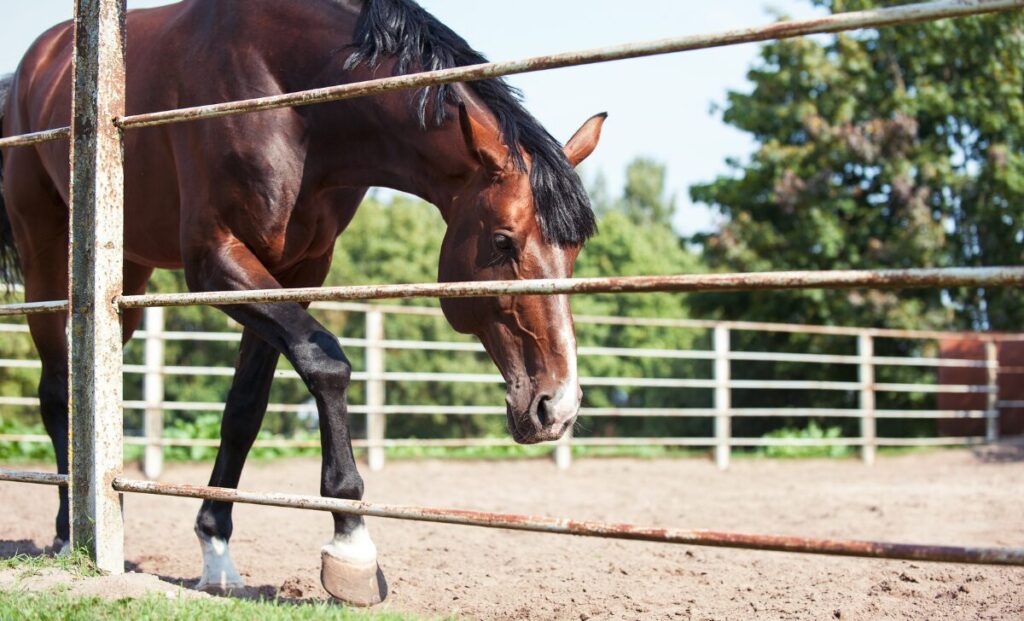
Celebrated Thoroughbreds in History
Thoroughbreds have a rich history and have left an indelible mark on the sport of horse racing. Many legendary Thoroughbreds have shaped the sport with their exceptional speed, strength, and performance. Notable examples include Arrogate, known for his remarkable victories and influential bloodline. His legacy continues to shape the breed and the sport even after his retirement from racing.
In addition to individual horses, certain locations have become synonymous with Thoroughbred history. An example is Belle Meade, one of the oldest Western thoroughbred nurseries, settled by John Harding. This location has played a significant role in the development and success of the Thoroughbred breed. Similarly, Keeneland, a racecourse and auction company in Kentucky, has been a pivotal part of Thoroughbred racing for over 75 years.
The Influence of Thoroughbreds on Horse Breeding
Thoroughbreds have had a profound influence on horse breeding across the world. Their speed, endurance, and competitive spirit have made them highly desirable for enhancing other breeds. The bloodlines of successful Thoroughbreds are often sought after to improve the genetic pool of future generations.
Thoroughbred sires, in particular, have played a crucial role in shaping the sport. Their legacy extends beyond their racing careers, as their genes continue to impact the performance of their offspring on the racetrack.
Legacy Bloodstock, a family-oriented operation, is one such entity that emphasizes the significance of quality breeding in maintaining the legacy of Thoroughbreds. Similarly, initiatives like the one led by OSU Alumnus Bill Witman aim to sustain historic Kentucky Thoroughbred farms, further emphasizing the importance of preserving and enhancing this iconic breed.
The legacy of Thoroughbreds is not only confined to their performance and influence on horse breeding. They have also been instrumental in shaping the cultural and historical fabric of horse racing. A notable example is the legacy of Black Horsemen, whose contributions to Thoroughbred racing have been highlighted in a historical documentary by Kentucky Educational Television.
Conclusion
The Thoroughbred is undoubtedly a breed that stands out in the equestrian world. Their combination of speed, strength, and spirit makes them a thrill to watch on the race track and a pleasure to ride. Whether you’re an avid racing fan or an equestrian looking for a versatile and athletic horse, the Thoroughbred offers an unrivaled blend of qualities that make them truly special.
